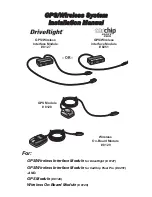
n
Protecting Larger Children
When a child is too big for a child seat, secure the child in a rear seat using
the lap/shoulder seat belt.
Have the child sit upright and all the way back, then ensure the following:
• The child’s knees bend comfortably
over the edge of the seat.
• The shoulder belt crosses between
the child’s neck and arm.
• The lap part of the seat belt is as low
as possible, touching the child’s
thighs.
• The child can stay seated for the
whole trip.
If a lap/shoulder belt cannot be used properly, position the child in a
booster seat in a rear seat. For the child’s safety, check that the child
meets the booster seat manufacturer’s recommendations.
When installing a booster seat, make sure to read the instructions that
came with it, and install the seat accordingly.
There are high- and low-type booster seats. Choose a booster seat that
allows the child to wear the seat belt correctly.
Some U.S. states and Canadian provinces/territories require children to use
a booster seat until they reach a given age or weight (e.g., 6 years or 60
lbs). Be sure to check current laws in the state or province/territory where
you intend to drive.
Allowing a child age 12 or under to sit in the front can result in injury or
death if the passenger’s front airbag inflates.
If a larger child must ride in front, move the vehicle seat as far to the rear
as possible, have the child sit up properly and wear the seat belt properly,
using a booster seat if needed.
SAFETY INFORMATION
26 |
Safety Label Locations
Safety labels are in the locations shown. They warn you of potential hazards
that can cause serious injury or death. Read these labels carefully.
If a label comes off or becomes hard to read (except for the U.S. dashboard
label which may be removed by the owner), contact a dealer for a
replacement.
SAFETY INFORMATION
| 27
















































